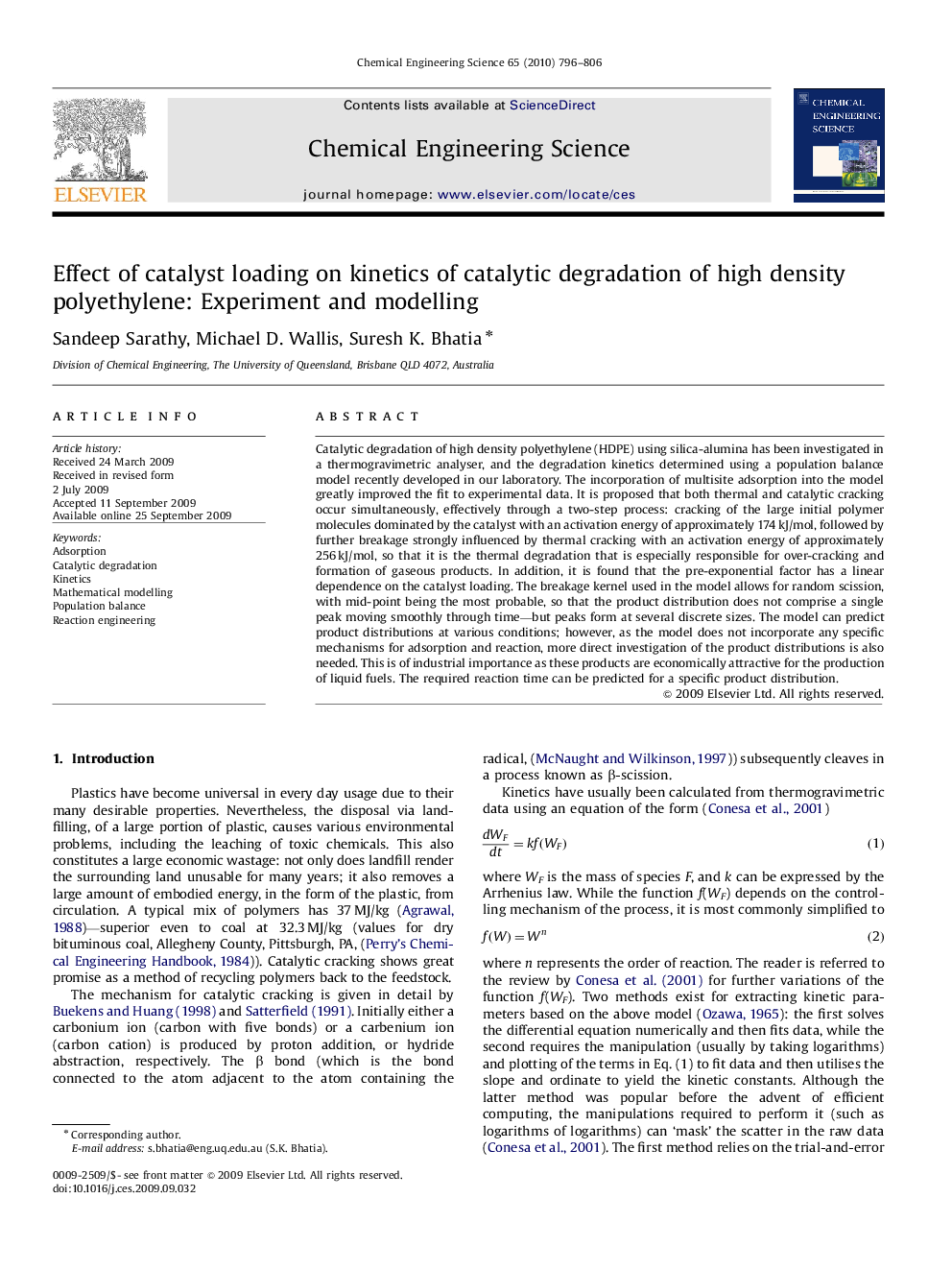| Article ID | Journal | Published Year | Pages | File Type |
|---|---|---|---|---|
| 157513 | Chemical Engineering Science | 2010 | 11 Pages |
Catalytic degradation of high density polyethylene (HDPE) using silica-alumina has been investigated in a thermogravimetric analyser, and the degradation kinetics determined using a population balance model recently developed in our laboratory. The incorporation of multisite adsorption into the model greatly improved the fit to experimental data. It is proposed that both thermal and catalytic cracking occur simultaneously, effectively through a two-step process: cracking of the large initial polymer molecules dominated by the catalyst with an activation energy of approximately 174 kJ/mol, followed by further breakage strongly influenced by thermal cracking with an activation energy of approximately 256 kJ/mol, so that it is the thermal degradation that is especially responsible for over-cracking and formation of gaseous products. In addition, it is found that the pre-exponential factor has a linear dependence on the catalyst loading. The breakage kernel used in the model allows for random scission, with mid-point being the most probable, so that the product distribution does not comprise a single peak moving smoothly through time—but peaks form at several discrete sizes. The model can predict product distributions at various conditions; however, as the model does not incorporate any specific mechanisms for adsorption and reaction, more direct investigation of the product distributions is also needed. This is of industrial importance as these products are economically attractive for the production of liquid fuels. The required reaction time can be predicted for a specific product distribution.
